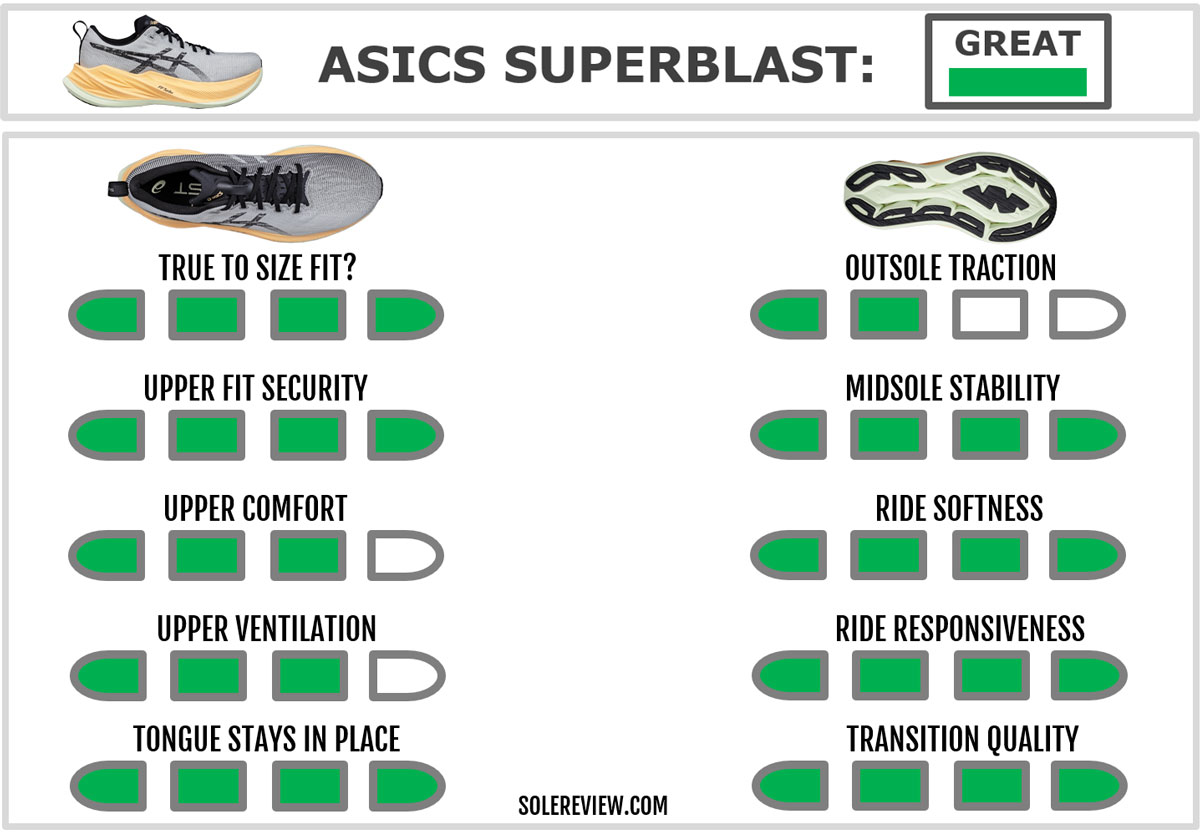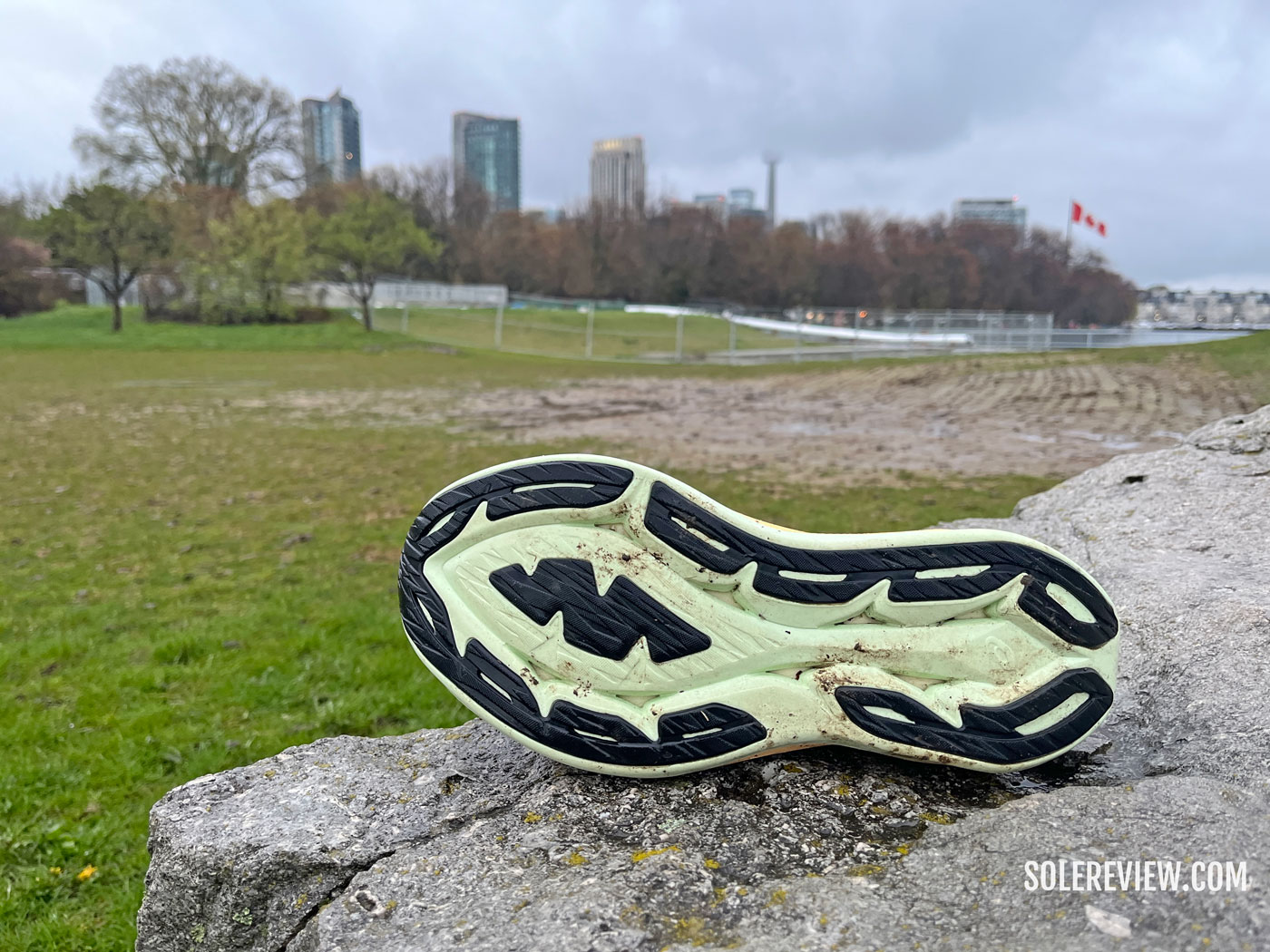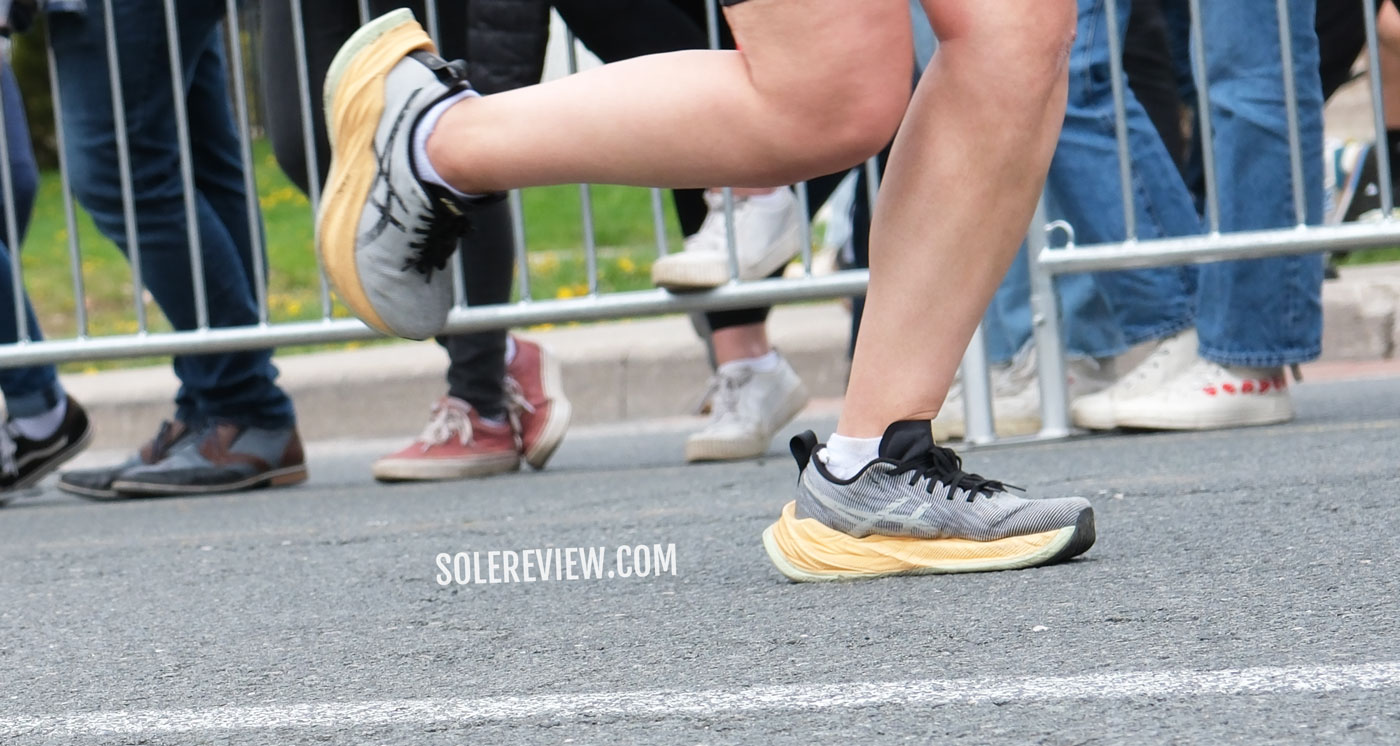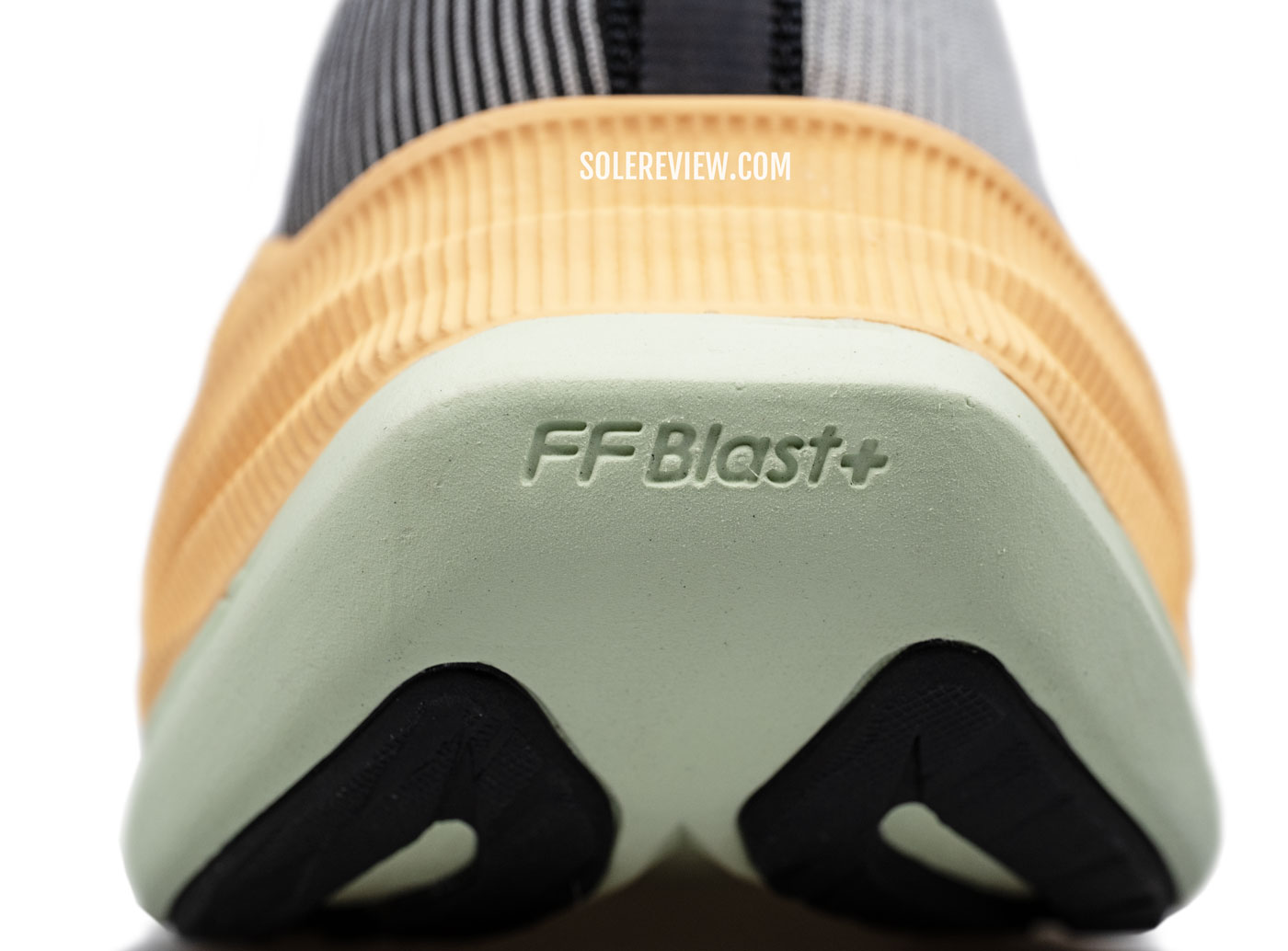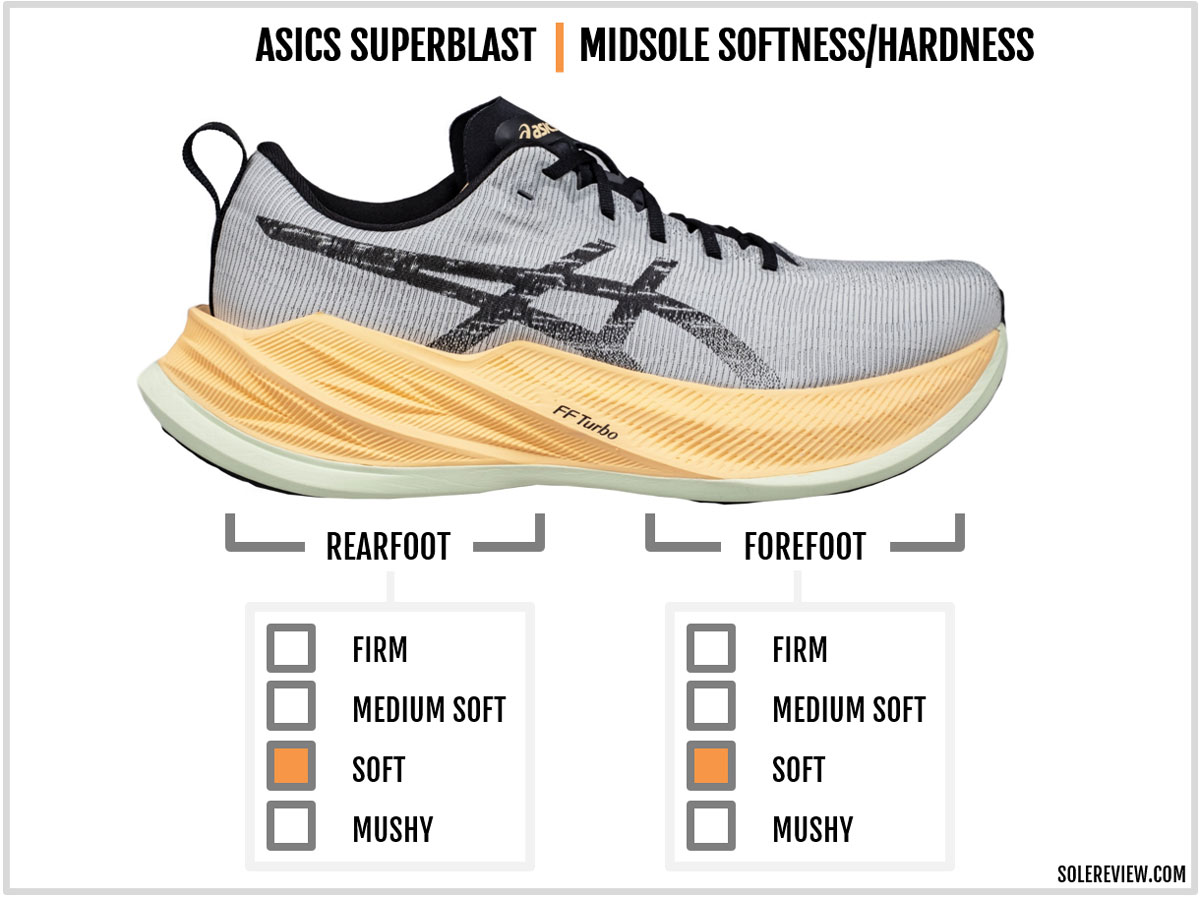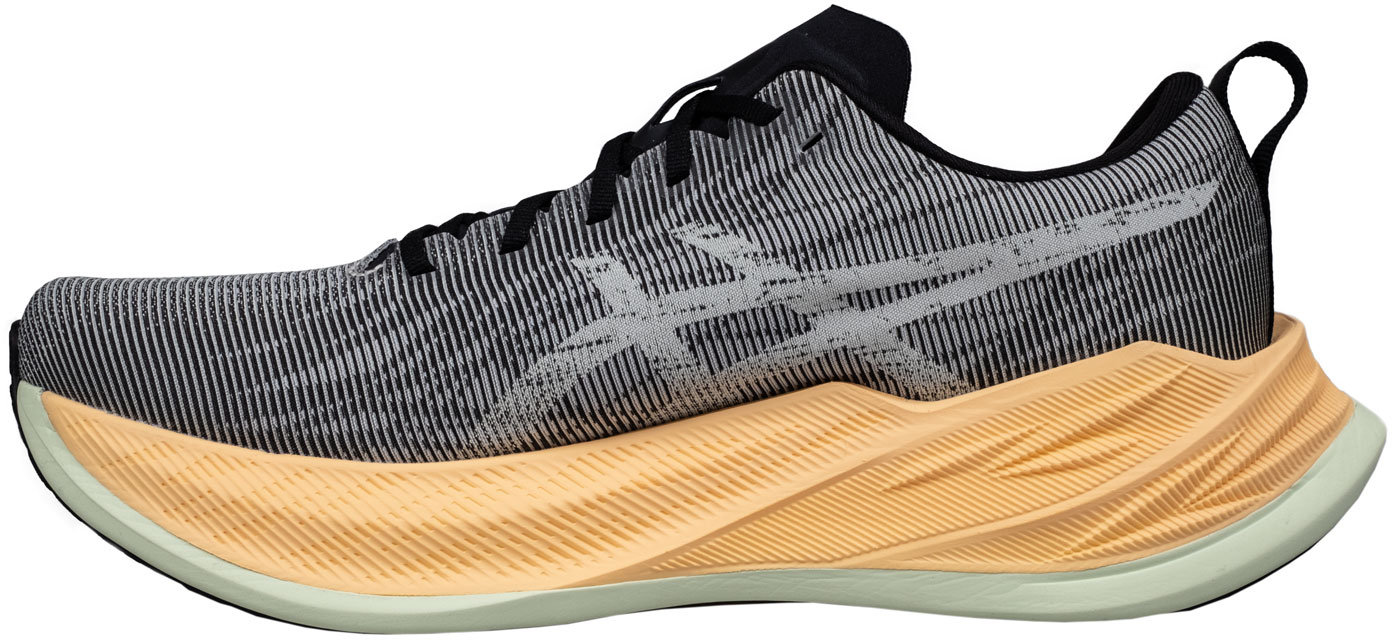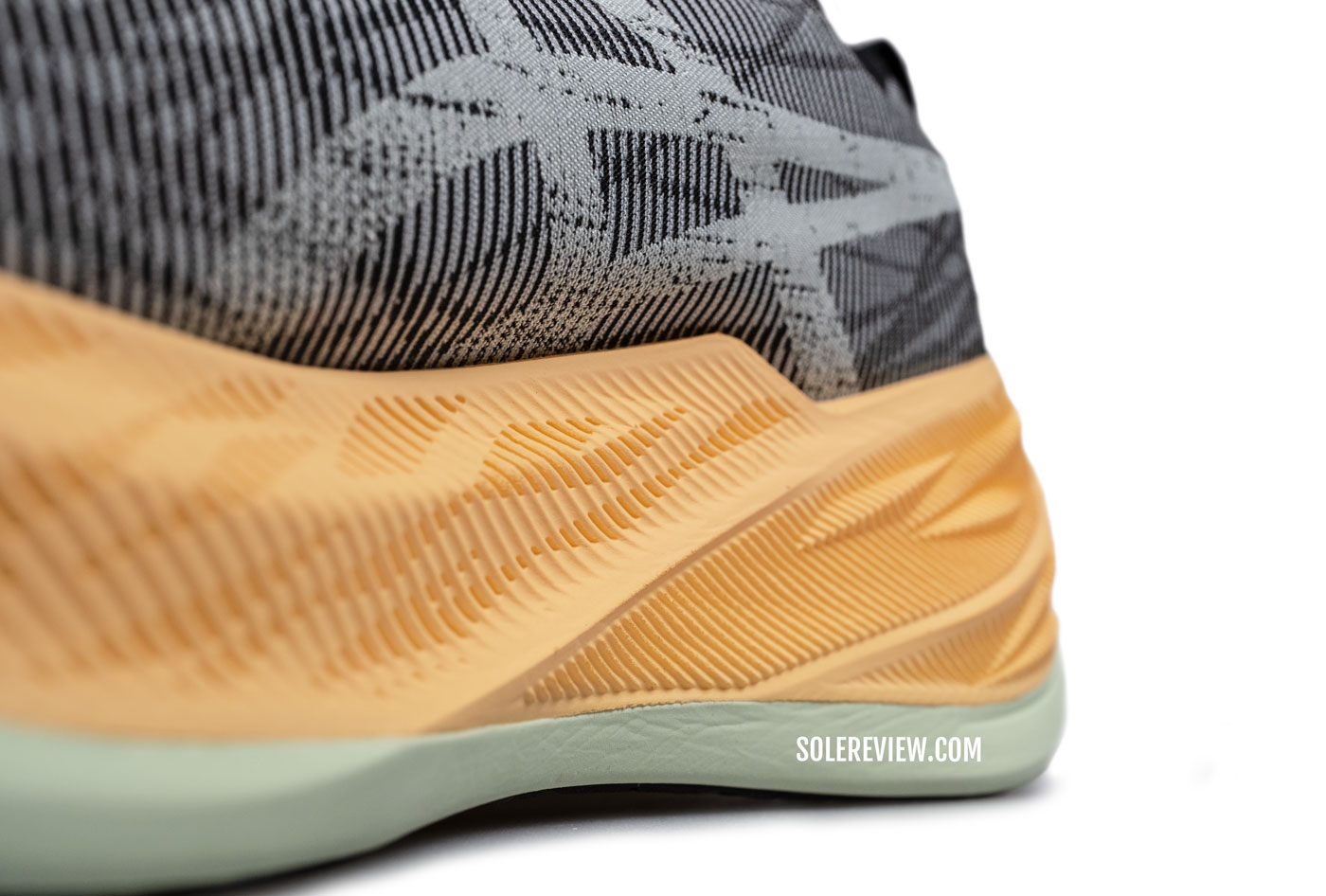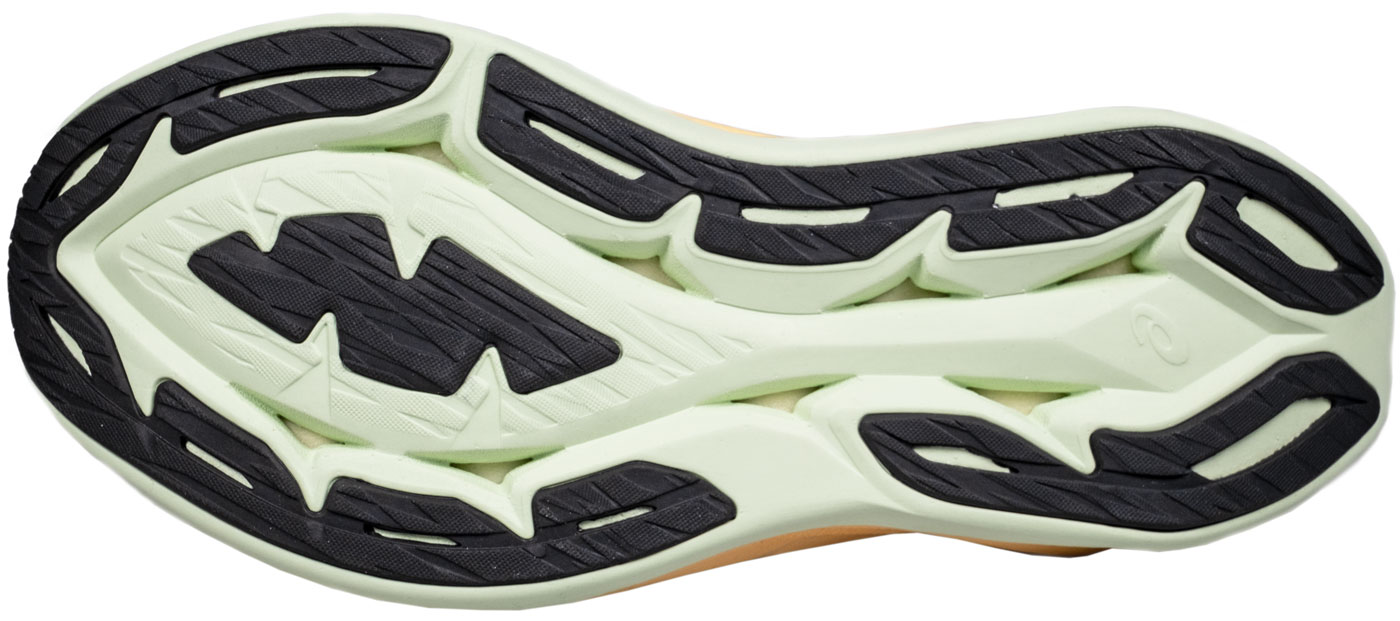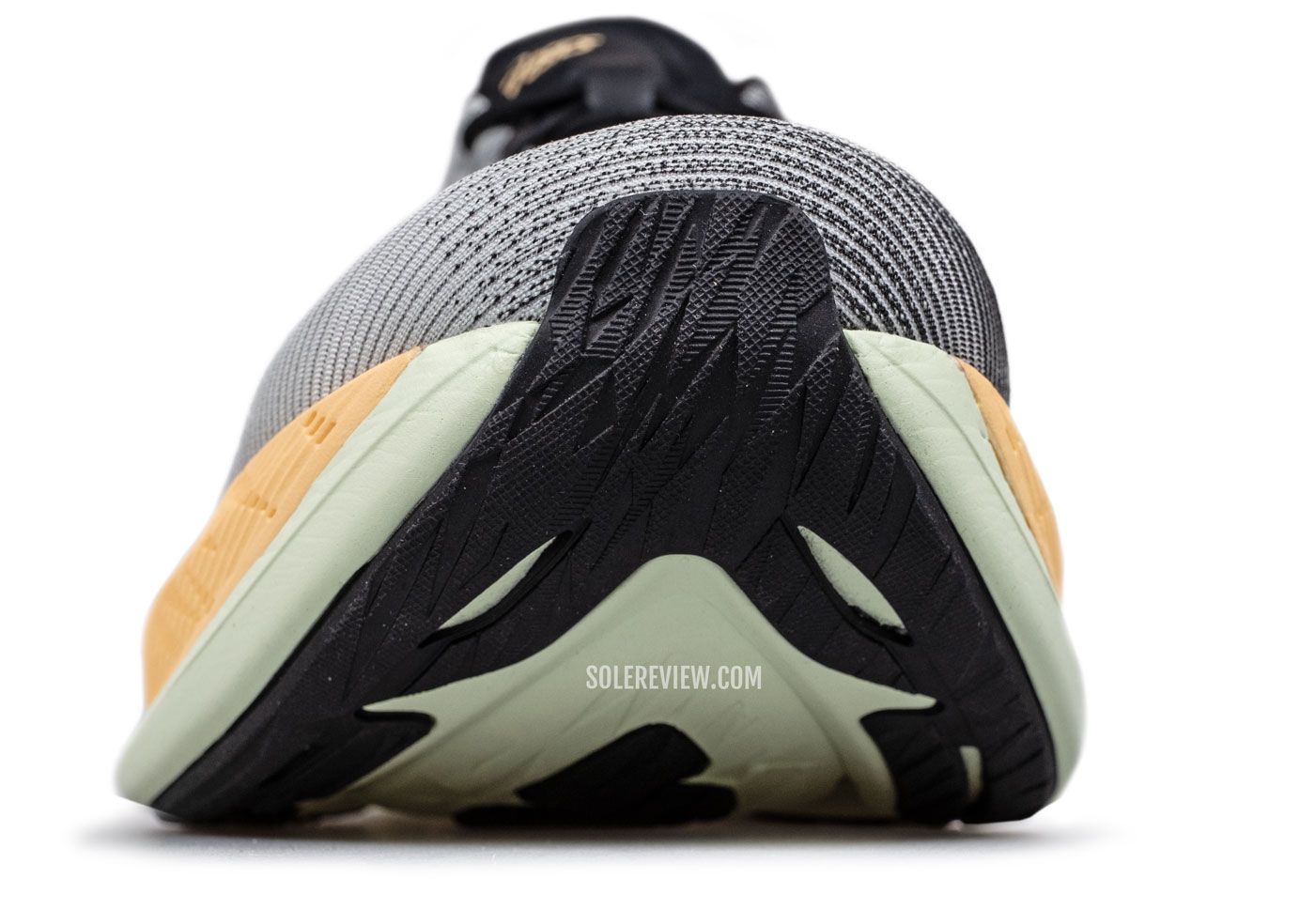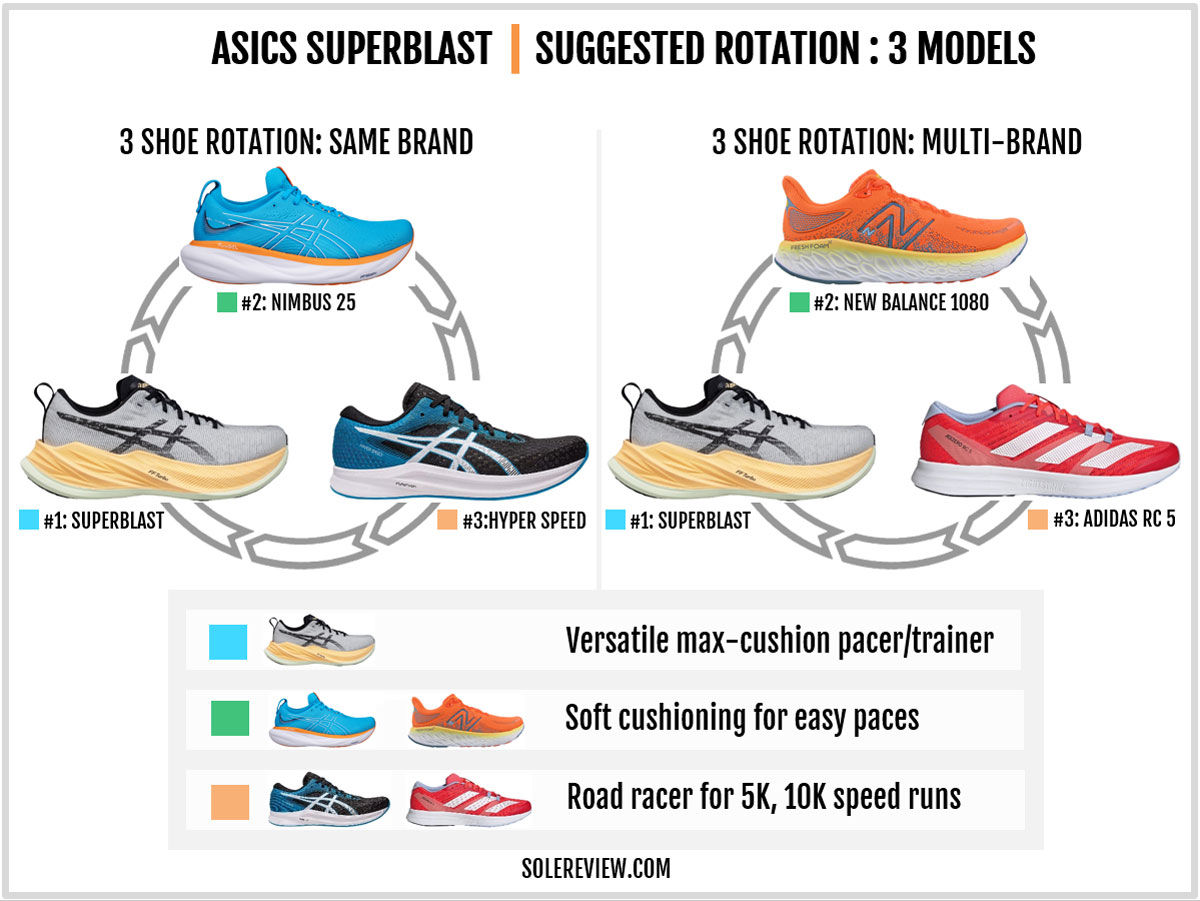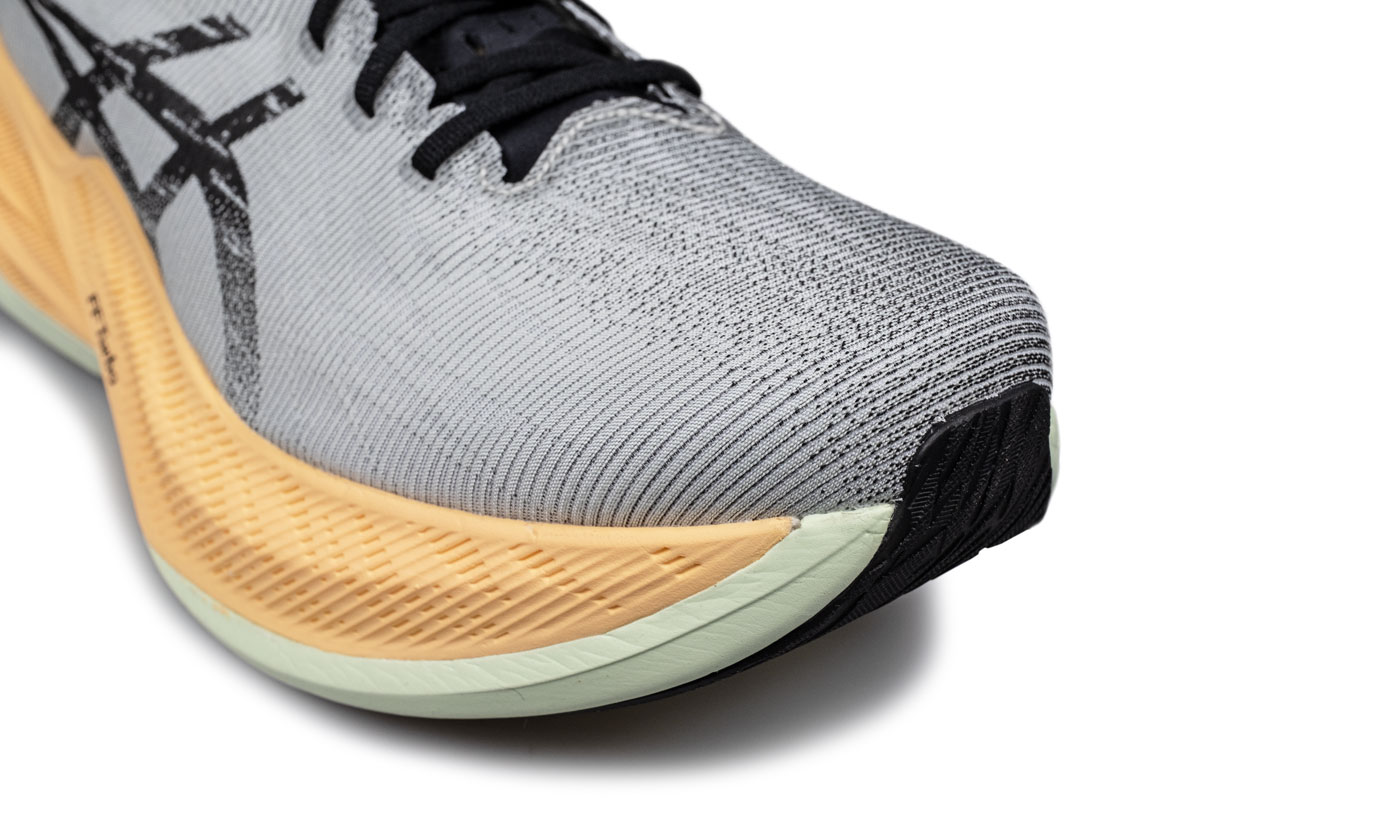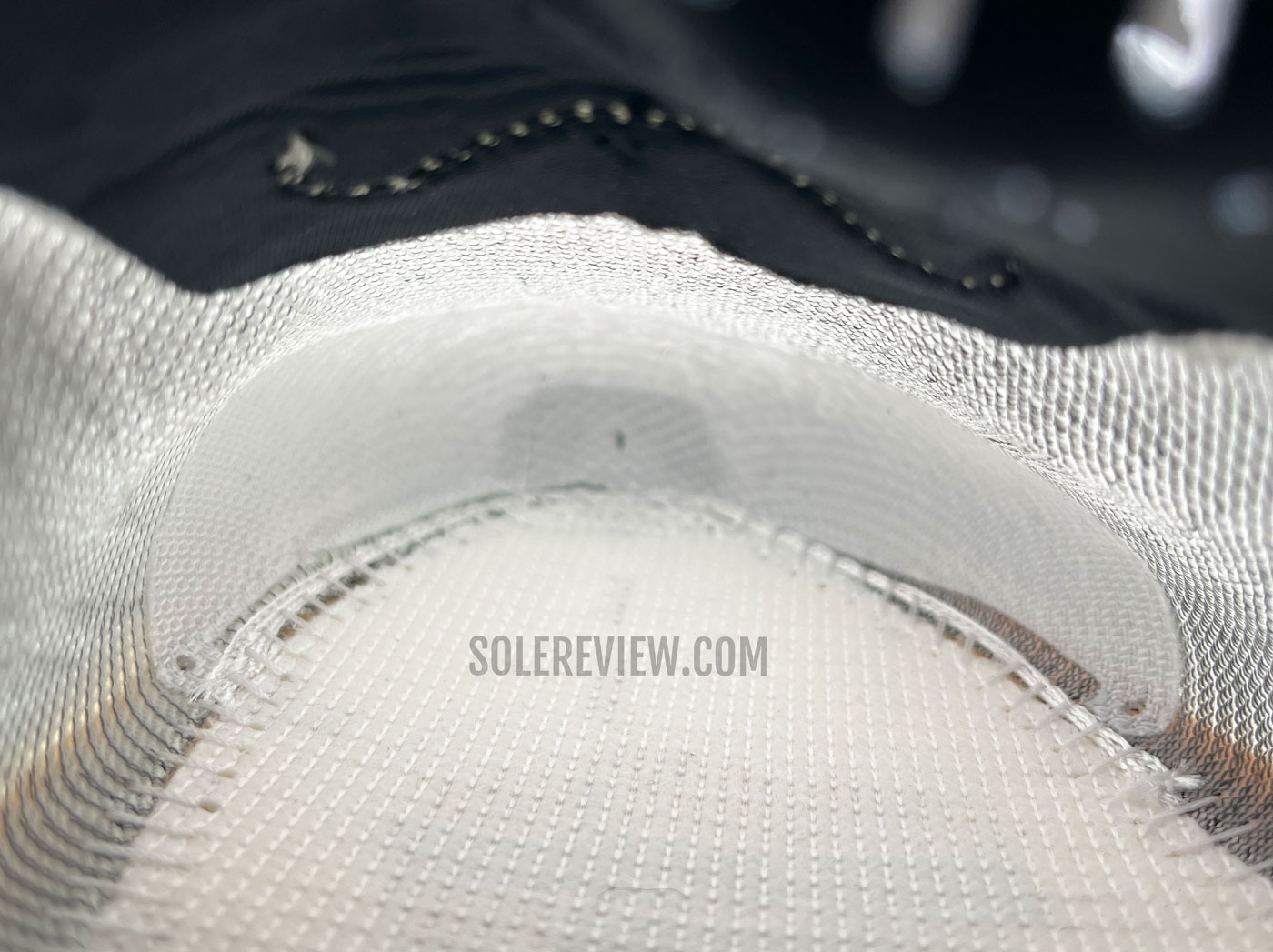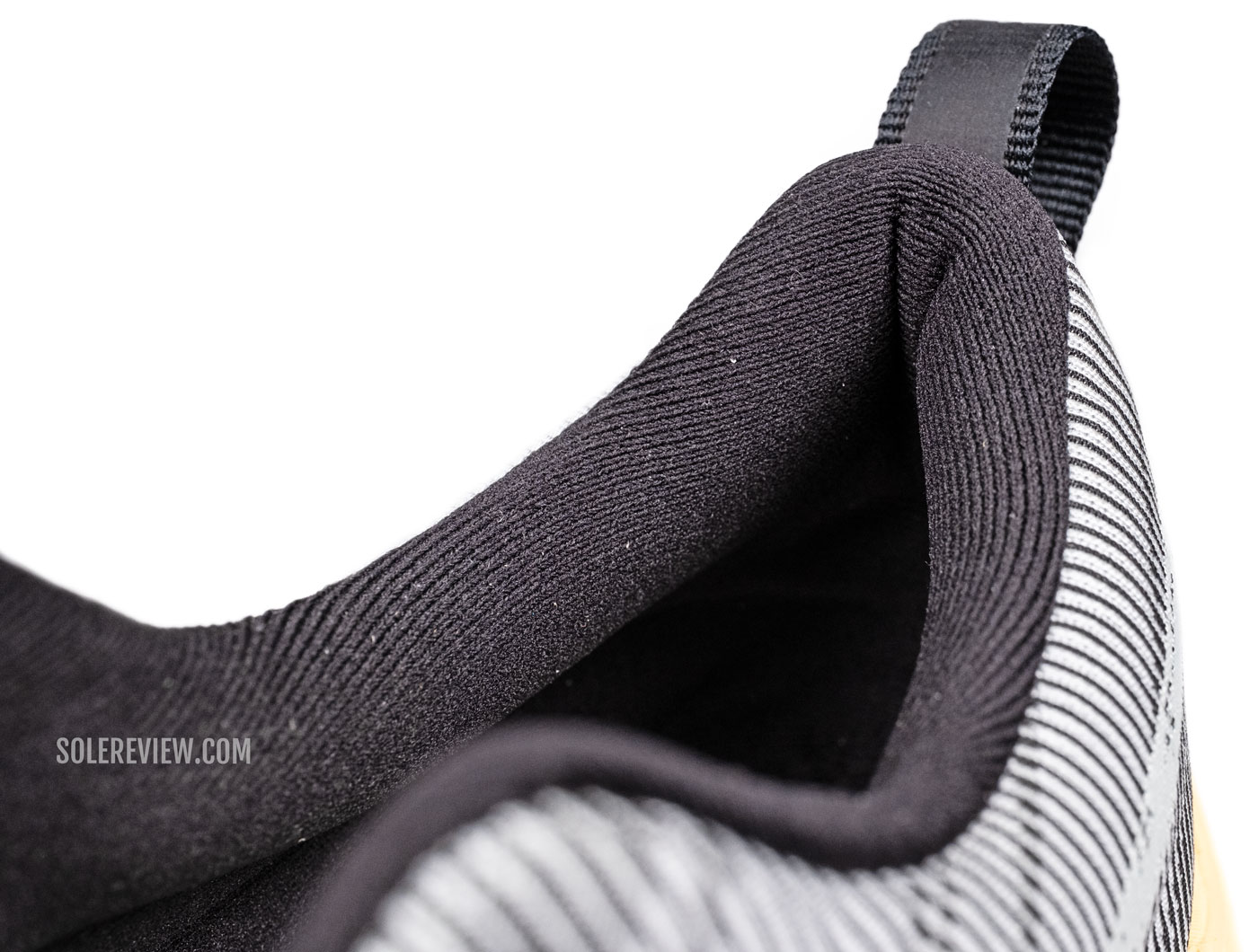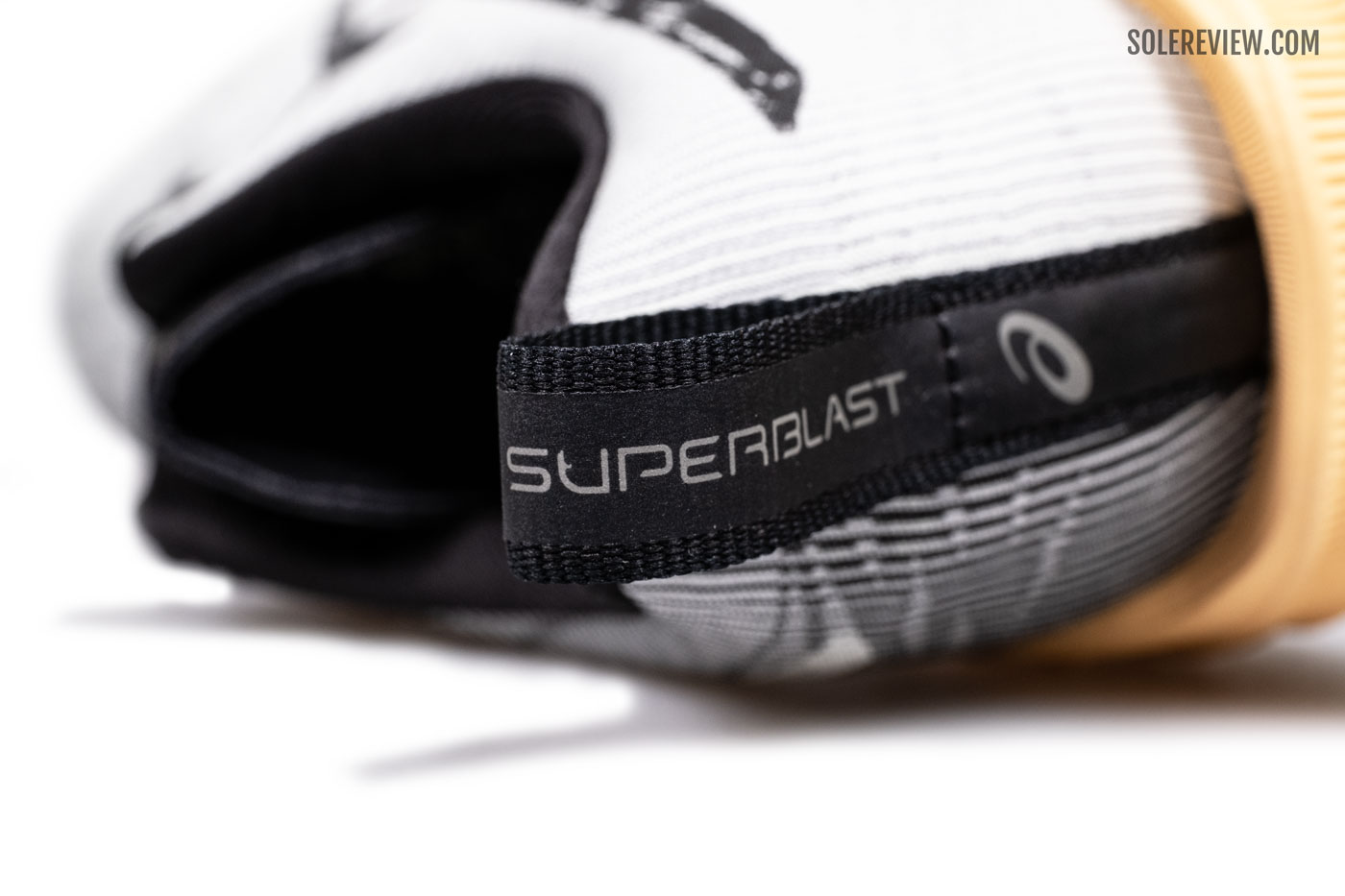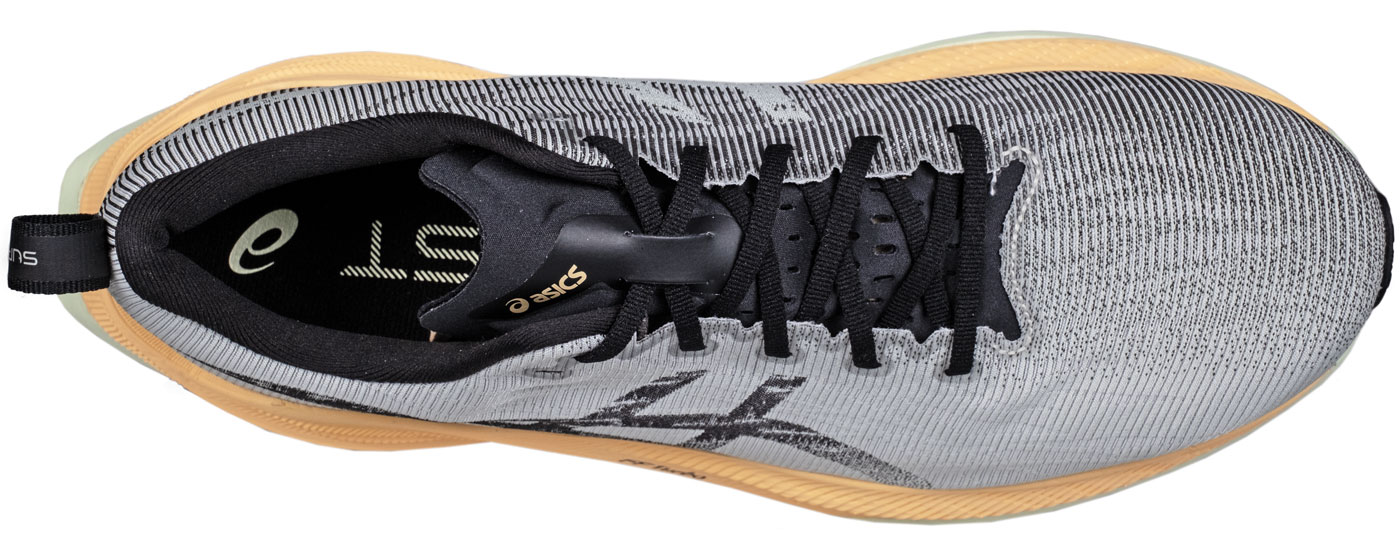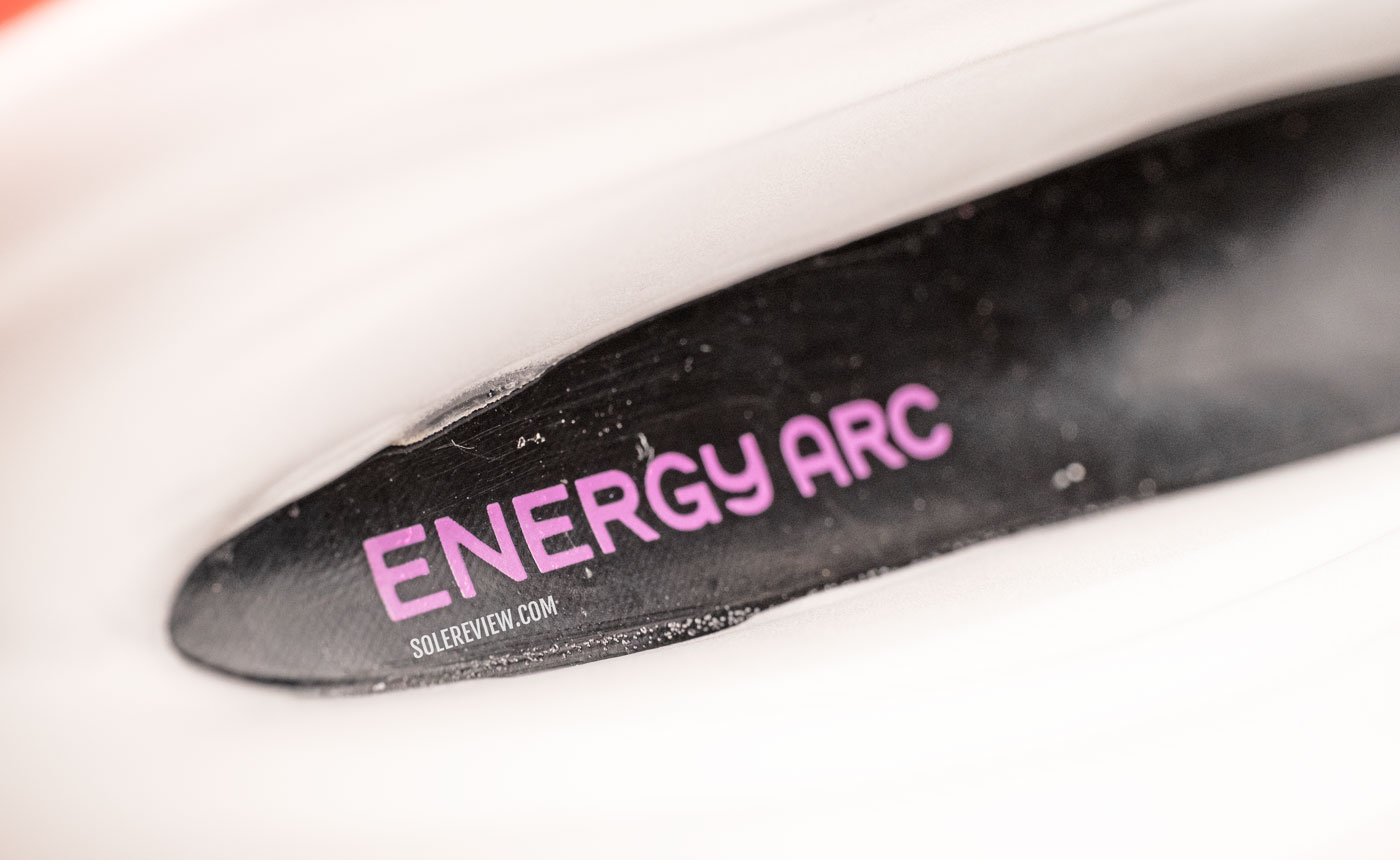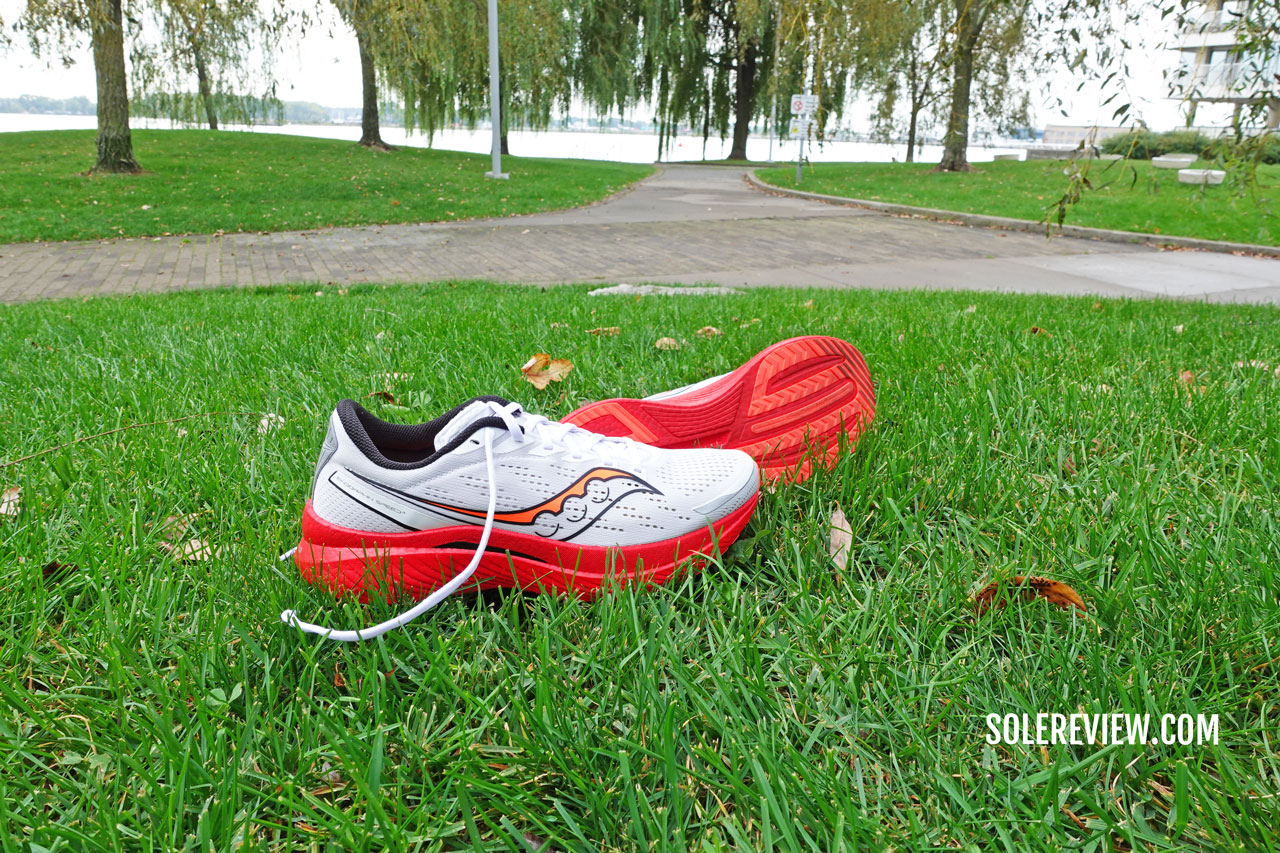
For this review, Solereview purchased the Asics Superblast at full retail price. The amount is in Canadian Dollars.
In this review:
SUMMARY AND VERDICT
The Asics Superblast is much more than a lighter, softer, and more comfortable version of the Asics Novablast 3. While that description is accurate, it’s a gross oversimplification of what the Superblast is about.
It’s rare to come across running shoes that stand out in a crowded marketplace of similar products. That’s what makes shoes like the New Balance Rebel 3 and Asics Novablast 3 special – a strong sense of purpose, or raison d’être if you will.
We imagine it took Asics a considerable amount of willpower not to chuck in a Carbon plate inside the Superblast. After all, everyone is doing it, so why the hell not?
But the Asics Superblast doesn’t have a Carbon plate, and that works in its favor. It takes a few lessons from the plated marathon shoe playbook while sidestepping some of the common flaws.
The tall midsole is made mostly of Asics’s Flytefoam Turbo, a foam that’s also found on their plated Metaspeed racers. The rocker midsole is there too, and so is the lightweight racer-like upper.
At the same time, the Superblast avoids some of the shortcomings of a typical super-shoe with a plate. For example, the wide midsole (and outsole) make the ride very stable.
In our opinion, the Superblast’s biggest strength is its versatility and forgiving nature.
Many speed-friendly shoes with a tall midsole (and a plate) have a low tolerance for poor form, slower speeds, or whether a runner lands heel or midfoot first.
Those boundaries do not apply to the Superblast; it has an inclusive ride character that is also extremely versatile.
The 8 mm offset midsole works equally well for heel strikers as it does for midfoot strikers. The tall and wide midsole feels at home doing 3:30 min/km (5:30 min/mile) paces as it does at 5:30 min/km (8:50 min/mile) speeds.
The following use cases are considered dualities in the running shoe industry, but the Asics Superblast does both with ease.
A: It’s a cushioned marathon shoe without a plate.
B: It’s an everyday trainer that’s highly versatile across a wide range of running speeds and distances.
As you can see, not many running shoes can do what the Superblast does – they are usually good at A) or B), but seldom at both.
THE MIDSOLE DESIGN AND RIDE EXPERIENCE

When viewed from the side, the Superblast carries the unmistakable ‘max-cushion’ marathon racer silhouette.
The Asics Superblast combines two popular form factors from the running shoe industry, and somehow makes it work.
The first one is obvious. A max-cushioned super foam midsole and rocker shape happens to be the silhouette of choice in plated marathon racers.
The Asics Superblast also replicates what worked well for the first Nike Pegasus Turbo.
A softer Flytefoam Turbo is fused to a thin firm FF Blast+ base. This setup makes the shoe comfortable and responsive on top, while the firm base works together with the outsole to enable quick transitions.

The Superblast is deeply cushioned, but not plush. Its bounciness is milder than PEBAX-based peers such as Nike ZoomX or Saucony Pwrrun PB.
However, the Asics Superblast behaves differently than the first-generation Nike Pegasus Turbo. The Flytefoam Turbo isn’t as soft or bouncy as Nike’s ZoomX, and it’s also a much taller shoe.
The Flytefoam Turbo – the same foam that is used on the Asics Metaspeed – is soft, but not in a sink-in plush kind of way.
The FF Turbo is incredibly lightweight, so the Superblast weighs just over 8 ounces. That’s low weight for a max-cushion tempo trainer.
Asics claims that the heel is 45.5 mm thick with a 37.5 mm forefoot; that’s a lot of foam separating the foot from the road. We can’t verify those numbers without cutting the shoe open, but we assume those numbers include the outsole and insole, and not just the midsole.
The recognizable rocker shape is prominent on the Superblast. Both the heel and toe area have a high ‘spring’ or ‘lift’ from the ground, and the forefoot is inflexible. As expected, the rocker forefoot makes roll-offs quicker at the end of the gait cycle.
The design choices enable the Superblast to produce fast miles in maximum comfort. There’s sufficient comfort for marathons and further. The lightweight build is a bonus, as there’s less weight dragging the feet down.
The ride stability is another area where the Superblast performs better than plated-infused racers. The midsole (and outsole) has a wide footprint from the heel to toe. Typically, running shoes have a narrow waist in the midfoot area – the Superblast doesn’t.

The fabric lasting adds stability by preventing the foot from ‘sinking’ into the soft Flytefoam Turbo core.
The foot is supported not only by the wide midsole, but also by the raised sidewalls. The Novablast also follows the same best practices, so the results are remarkably similar.
Both sides of the midsole have a balanced and supportive sidewall, and that creates a neutral ride experience by preventing cushioning bias.
The outsole design facilitates smooth transitions. The inner outsole has a long rubber lug, and other longer strips are placed around the periphery.
We’d go out on a limb to say that the Asics Superblast is the most supportive running shoe made of super-foam. This is a high-stack tempo trainer that will happily work for heavy runners.
There’s a reason why most of the Carbon-plated racers like the Nike Vaporfly and Saucony Endorphin Pro 3 have a slim heel base. The ‘snap’ of the plate would be weaker inside a thick midsole, so the lower stability is accepted as a willing compromise in exchange for a higher energy return.
The Asics Superblast suffers from no such obligations, so the midsole can be wide without diluting the ride experience.
Its on-road versatility is the best thing about the Asics Superblast.
The unique blend of the max-stack cushioning, speed-friendly design, and midsole stability makes the Superblast extremely user-friendly. There is no learning curve at all.
There’s no prescribed method for running in the Superblast. Do you want to run your marathons in them? Sure, go ahead. Does it work as an everyday trainer, regardless of the running speed or mileage? Yes, the Superblast is happy to oblige.
There is no penalty or diminished performance, no matter the running form, speed, or foot-strike pattern. The wide 8-mm offset midsole and beveled heel make the Superblast equally accommodating of forefoot and heel striking.
In short, the Superblast could be your everyday trainer, marathon racer, or just a long-distance shoe for cruising down.
The outsole grip is decent but far from great, and that’s a trend observed on several Asics products as of late. We called it out on the Novablast 3, and even the Nimbus 25 and Cumulus 25 are not excellent in this area.
There’s only a small lug under the forefoot, so there’s only so much it can do. It does okay on dry sidewalks/roads, but the traction deteriorates in damp conditions – especially when running on tiled paths or roads with surface slush. It’s slightly better than the Novablast, but that’s a low bar.
Asics should borrow the flat outsole from its Metaracer for the next version of the Superblast. After all, this is a $200 shoe, so why not?
RECOMMENDED ROTATION
The versatility of the Asics Superblast makes some of our typical rotation advice redundant.
That said, either the Asics Nimbus 25 or New Balance 1080 V12 are nice to have as ‘cruisers’ for long and easy miles. Both have a plusher and less aggressive ride quality than the Superblast.
For shorter 5K races and speed miles, the adidas RC5 (or adios 7) and Asics Hyper Speed 2 are excellent options. The Asics Lyteracer 4 is also worth trying.
IS THE ASICS SUPERBLAST DURABLE?
At this point, the durability estimates are just that – best guess.
While there’s no long-term data on the Superblast yet, the track record of the Flytefoam Blast+ and FF Turbo are reliable yardsticks of durability.
A lifespan of 400 miles should be easy to achieve without any degradation in the Superblast’s performance.
THE UPPER DESIGN AND FIT
The Superblast has a similar fit as the Novablast.
If you don’t know what means, the upper has a snug forefoot with a broad toe-box. The toe bumper has a nice definition with ample room on the side of the big toe, so that may create an impression of a longer fit.
We recommend buying true to size rather than sizing down. While the toe-box does feel roomy, the forefoot fit is secure.
The Superblast lacks optional widths, so runners with wide feet may want to look elsewhere. For standard (D width) and narrow-footed runners, the Superblast fit has just the right proportions.
A snug forefoot fit always works on a tempo trainer, as it makes the power transfer to the midsole efficient. Most speed-focused shoes should have a conforming upper fit, so this isn’t at odds with the Superblast’s character.
The rigid heel counter has a low height, so the heel collar doesn’t bite the Achilles. The heel grips confidently and in a non-intrusive manner. There’s a functional grab loop in the back, and that’s the only place where reflectivity can be found.
We were expecting some top-down pressure from the laces, considering that only the flap is partially padded. The rest of the tongue is non-quilted and vented. However, the flat ribbon laces lie flush without applying unwanted pressure.
The tongue is attached to a sleeve, so the soft flap stays put during runs. The slightly elastic sleeve snaps the tongue over the foot, thereby securing the midfoot.
The ventilation is good but not great – a more breathable mesh is preferable during marathons though.
On the aesthetic side, we love the logos and graphics that are integrated into the knit structure instead of being printed.
ORTHOTIC COMPATIBILITY
The stock insole isn’t very thin, but it isn’t plush either. So if you’re replacing it with an aftermarket or custom insole, a matching thickness will help preserve the upper fit as well as the heel-to-toe drop.

The Asics Superblast will not play well with an orthotic that is substantially thicker than the stock insole.
For example, if the stock insole was replaced by a Superfeet Green, the structured heel will add a couple of millimeters to the drop. A thick orthotic will also affect the heel lock-down and also make the overall fit tighter.
PROS AND CONS
The positives of the Superblast vastly outweigh the minor flaws. Sure, the $200 price seems excessive, and an optional width would have been nice. The outsole design could also do with some engineering to improve its grip.
It’s smooth sailing for the rest of the shoe. The Superblast delivers everyday versatility as well as race-ready speed and comfort; such running shoes are a rare commodity. The high level of ride stability is another bonus, as it widens the Superblast’s appeal to a larger population.
COMPARISON: THE ASICS SUPERBLAST VERSUS ASICS NOVABLAST 3
Despite being outwardly similar, there’s a wide performance gap between the Superblast and Novablast 3. The additional features and benefits of the Superblast justify the $60 price difference; this is a textbook example of product tiering.
The less expensive Novablast has a firmer ride. This is expected, considering the 5 mm lower midsole and missing Flytefoam Turbo. On the other hand, the Superblast’s cushioning makes long-distance races less punishing on the feet.
Both trainers are capable daily trainers, but the Superblast has an edge as a marathon shoe.
For what it’s worth, the outsole traction is also better than the Novablast. The softer midsole gives the outsole lugs flexibility to cover a larger contact area. On the Novablast, the firmer midsole prevented this from happening.
Here’s the gist. If you can afford the Superblast, it is objectively the better shoe – no two ways about it.
SHOES SIMILAR TO THE ASICS SUPERBLAST
We told you. There aren’t many running shoes like the Asics Superblast, so most comparable products come fitted with insole plates.
First up is the New Balance Fuelcell Supercomp Trainer. It’s a highly cushioned running shoe that doesn’t feel mushy, so it’s much more than a recovery shoe.
A Carbon fiber plate compliments the soft Fuelcell midsole by making it easier to transition through the gait cycle. Just like the Superblast, the rocker forefoot helps with the roll-offs during the take-off phase.
The Nike Zoom Fly 5 is heavier than the Asics Superblast, but it’s an equally supportive and versatile shoe that’s good for everyday runs as well as marathons. The $40 less expensive price tag makes it better value for money than the Superblast. Our review tells you more about the Z-Fly 5.
Finally, the tried and tested Saucony Endorphin Speed 3 gives you the familiar snap of the plate along with a bounce of a PEBA foam midsole. Our review is here.
Do you own this shoe? Improve this review by sharing your insights.


